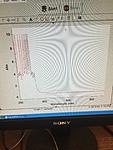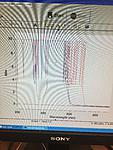By the way, I have long argued that a strict UV filter is unnecessary because optical glass(depending on its exact composition) goes opaque somewhere in the 350-400nm range. In the lab, our UV-Visible spectrophotometers use quartz optics. When we want to measure a sample in the UV region of the spectrum, we have to use quartz cuvettes(sample holders) or plastic specified to be translucent over the desired wavelength range.
So, out of curiosity, I also dropped in a lens-this is nothing special, just a 50mm f/1.8 AF Nikkor. The signal attenuation over the visible region that you see is a result of the light being out of focus after passing through the lens. In any case, you can see that the cut off is nice at 400nm. It just goes to show me what I've been saying for years-a UV filter is nothing but a lens cap that you can shoot through(yes, I use them

)





 Reply With Quote
Reply With Quote )
) 



Bookmarks